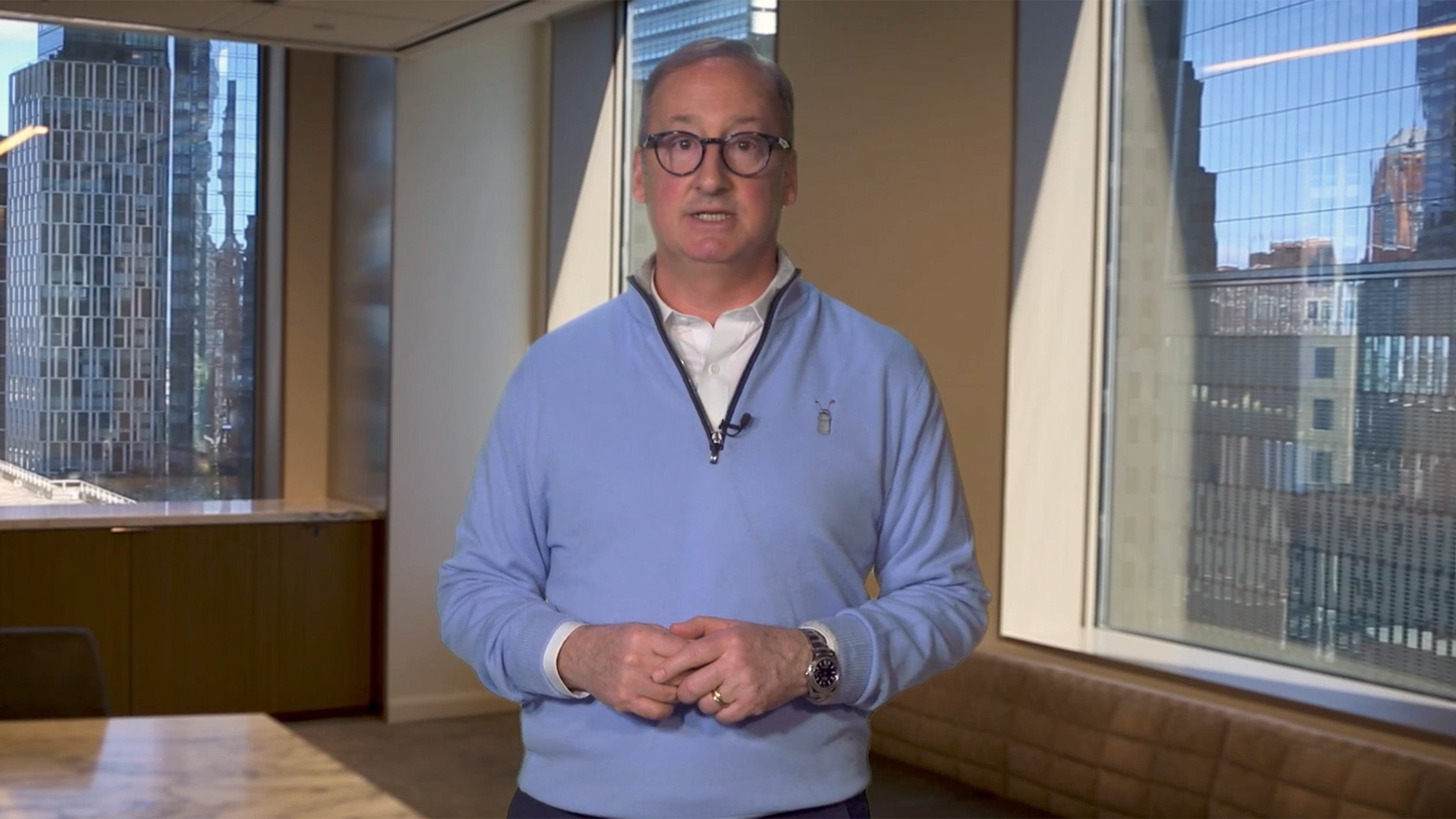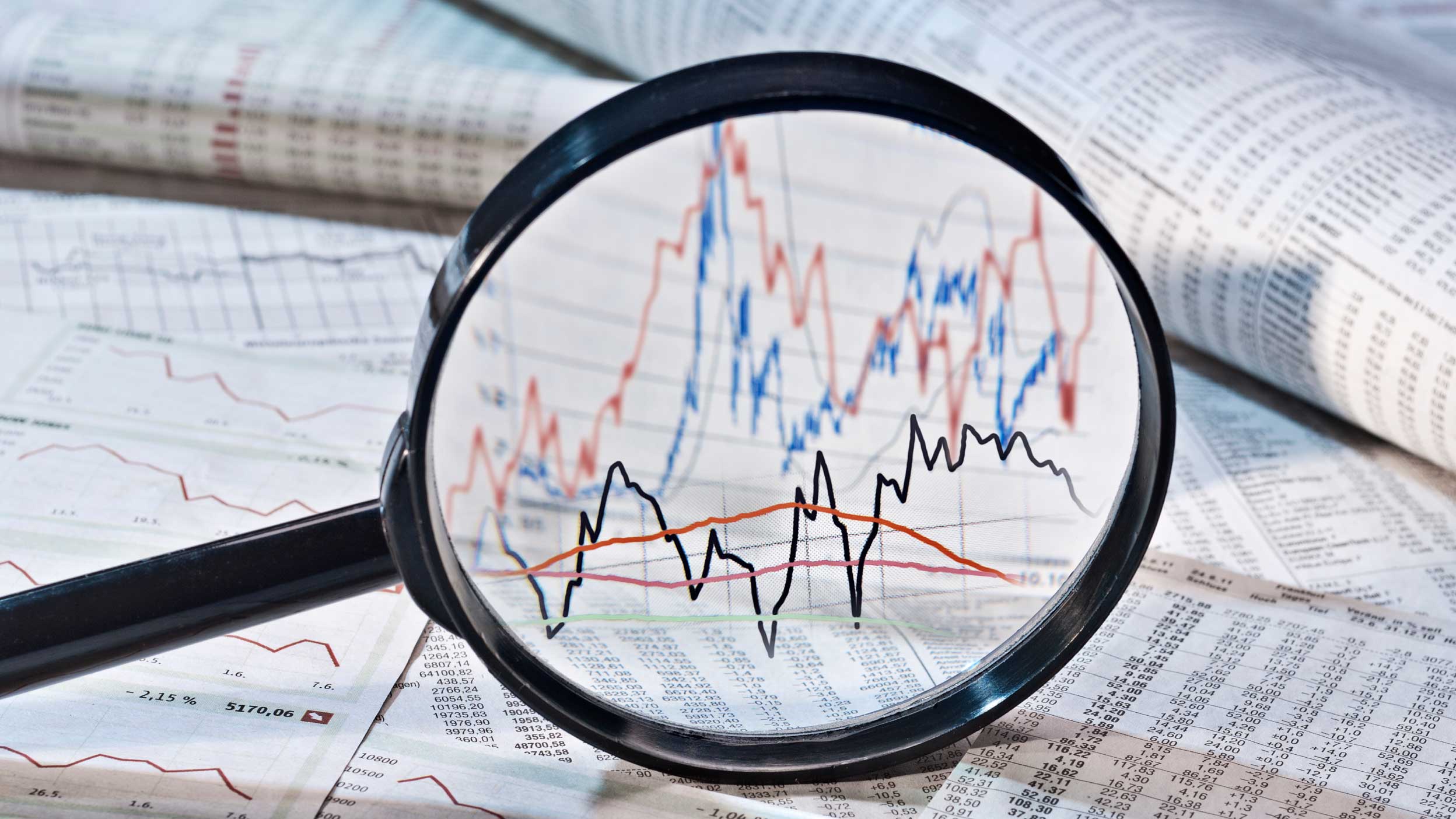
ETF The strategic advantage of AAA-rated CLO Notes
Invesco Private Credit’s Kevin Petrovcik discusses new developments for AAA-rated Collateralised Loan Obligation (CLO) note investments and their potential advantages.

Paul Syms and Kathy Kriskey celebrate 15 years of our Gold ETC. They sat down to discuss the key drivers of the gold market and what to anticipate in the coming months. A golden opportunity to understand the past and future of gold investing.
Invesco launched a gold ETC 15 years ago when $1,000/oz was the big barrier. So far this year, gold has been rallying aggressively and recently broke through $2,400/oz. How did we get here?
[Kathy] It’s been an interesting 15 years for gold. It’s important remember that gold has played an important role in the development of society throughout time. It was initially used for ceremonial rites, and later as a global currency and store of value.
Going back to 1971, the US left the Bretton Woods system, which was set up after WWII, fixing exchange rates between gold and the USD. This led to a surge in gold prices going from $40/oz to $660/oz by 1980. It was a time of severe economic uncertainty with stagflation in the US, high inflation, low economic growth and high unemployment.
After that, gold was stable for about 20 years. It really started to shine in the 2000s, with the impact of the Global Financial Crisis and subsequently, the Great Recession, when investors sought a flight to safety. From 2001 to 2012, gold went from $300/oz to $1,700/oz. These were turbulent times, with the European sovereign debt crisis also supporting gold prices.
Things started to normalise as the US Federal Reserve ceased its quantitative easing and the US dollar (USD) strengthened, bringing gold back down to $1,200/oz by late 2014.
Then, the Covid-19 pandemic of 2020 also impacted the gold market, with its unprecedented disruptions to every part of our lives and economies. Prices ultimately pushed higher than $2,000/oz. From then, until this recent upward move, gold stayed basically in a range of $1,700/oz – 1,900/oz.
What are the main drivers for the gold price today? We’ve seen the increased demand from central banks, do you think they’ll remain big buyers?
[Kathy] The major drivers behind gold hitting its historic high are Emerging Market Central Banks buying in a move to “de-dollarise” their reserves, and retail demand for physical bars and coins. The central banks increasing their gold holdings are China, Turkey, India, Poland, Kazakhstan, Singapore, Russia, and the Czech Republic. The freezing of Russia’s USD-based reserves after their invasion of Ukraine concerned central banks around the world, and according to the World Gold Council, their purchases of (gold) bullion doubled.
On retail demand, Chinese consumers, nervous about their economy, currency, and property sector, have ramped up their purchases of physical gold, with March being the highest level seen in seven years. This retail demand isn’t just coming from China though. US retailer Costco is now offering gold bars to consumers. Increasing global government debt is also causing investors to look for diversification away from government bonds and currencies. We also have two active conflicts (Israel-Palestine and Russia-Ukraine), which make gold attractive as a perceived “safe-haven”. These investors are buying both physical gold and exchange-traded products which hold physical gold.
Another factor which normally impacts gold prices is interest rates. Though the European Central Bank made it first cut recently, the US is still awaiting the start of its easing cycle. The latest communication from the US Federal Reserve (Fed) indicates that rates might stay higher for longer, which isn’t great for gold prices. The eventual Fed easing, hopefully by the end of the year, should support prices, but some precious metal investors may stay on the sidelines until that happens.
So where do we go from here? I’d like to get your views on a couple of scenarios. First, what would you see over the next year as providing a bullish case for the gold price?
[Kathy] While gold prices are already relatively high, interest rates in the US still haven’t come down. Gold doesn’t pay any interest, so when other investments like bonds earn less interest, gold looks attractive. And inflation in the US has been sticky, staying above the Fed’s target level of 2%. Investors often use gold as an inflation hedge. So, if central banks continue to support central bank buying and geopolitical risks remain, gold could go higher when the Fed finally cuts interest rates. Elections fears (in the US and elsewhere) could also cause investors to use gold to hedge the uncertainty.
And what about a bearish case?
[Kathy] There are a few things that could happen which could cause gold to move down. The market believes that central bank buying has provided a floor to the gold price, initially around $1,900/oz, but lately around $2,000/oz - $2,100/oz. If central banks stop providing this floor, (because they pause or cease their purchases) we could see a correction.
China recently paused their 18-month buying spree, and that caused a correction. But a purchase pause may be natural. It happened in 2016, after which they re-entered the market. There are also other central banks, like in Turkey, that are ramping up their purchases. And while we are all hoping for an end to the ongoing geopolitical conflicts, gold may lose some of its “safe-haven” strength when that happens. If the Fed decides to put off their easing until mid-2025, this could unsettle investors in all markets and might also dampen gold demand.
Many consider gold as somewhat of a security blanket - when uncertainty picks ups, it’s nice to have gold to hold on to. We’ll see how investors feel about whether they need that blanket. While the gold price has rallied in recent months, it does feel like there are plenty of reasons for investors to continue looking to gold to meet certain objectives.
Having talked the key drivers of the gold price now and in the last 15 years since launching our physical gold ETC in 2009, here are some insights into the demand for gold exchange-traded products.
What are you seeing around exchange-traded product (ETC) demand from where you sit in the US?
[Kathy] The ETC response to this recent rise in gold prices was interesting – we saw outflows. I believe some of that was profit-taking for investors who’ve been holding gold ETCs for a long time. They’ve likely looked at the macroeconomic factors that normally push gold prices higher (like lower interest rates or a weakening dollar), which aren’t imminent. They made their money and took their chips off the table.
Now, we’re starting to see a shift to inflows for gold ETCs. For some of the recent down moves, we’ve noticed the disciplined investors buying the dip if they don’t have any gold exposure or holding onto their gold if you already own these ETCs.
There are many reasons to hold gold ETCs as part of a diversified portfolio. They could provide potential inflation and uncertainty hedges, diversification, and returns. And as has been the case already, it looks like there’s more uncertainty to come.
So, how investors can gain exposure to gold?
We launched our gold ETC back in 2009 to provide investors with low-cost, efficient exposure to gold. Since then, it has grown to over $15 billion in assets under management and is the largest and most cost-efficient gold exchange traded product in Europe*.
Why invest?
The first thing to highlight is that the best way to gain exposure to movement in the gold price is by investing in physical gold. This may seem obvious, but some investors may feel that investing in the equity of gold miners will provide that exposure. But over the last 20 years, the return on the equity of gold miners has lagged the rally in gold. This is because equity markets are affected by many other factors than just the change in the gold price.
The next choice is between direct physical ownership, gold futures or an ETC backed by physical gold. While direct physical ownership will provide that direct linkage to the gold price, there may be high costs for storage and insurance as well as transaction costs when buying and selling the physical metal. Futures can also provide returns that are similar to movements in the gold price, but they need to be rolled every couple of months to avoid taking physical delivery which can incur transaction and roll costs. Futures prices can also deviate from the spot gold price.
The final option is to gain exposure via a gold ETC. In this case, investors invest in certificates that are secured against the underlying precious metal and has the advantage of low and consistent costs. The fixed management fee on our gold ETC is just 12 basis points. Trading costs are low, with spreads usually less than four basis points. When combined with its operational simplicity, this makes our gold ETC an efficient, low-cost way of gaining exposure to movements in the gold price.

Invesco Private Credit’s Kevin Petrovcik discusses new developments for AAA-rated Collateralised Loan Obligation (CLO) note investments and their potential advantages.

Gold had a remarkable month, gaining 9.3% after breaking through US$3,000 and ending March at US$3,124. Economic and geopolitical uncertainty drove the gold price higher ahead of the trade tariffs scheduled to be announced on 2 April. Discover insights into the key macro events and what we think you should be keeping your eyes on in the near term.

Bond markets struggled in March, primarily due to concerns about the potential impact of upcoming US policies. Read our latest thoughts on how fixed income markets fared during the month and what we think you should be looking out for in the near term.
For complete information on risks, refer to the legal documents.
Value fluctuation: The value of investments, and any income from them, will fluctuate. This may partly be the result of changes in exchange rates. Investors may not get back the full amount invested.
Limited recourse: If the issuer cannot pay the specified return, the proceeds from the sale of the precious metal will be used to repay investors. Investors will have no claim on the other assets of the issuer.
Commodities: Instruments providing exposure to commodities are generally considered to be high risk which means there is a greater risk of large fluctuations in the value of the instrument.
This marketing communication is exclusively for use by professional investors in Continental Europe as defined below, Qualified Clients/Sophisticated Investors in Israel and Professional Clients in Dubai, Ireland and the UK. This communication may also be used by financial intermediaries in the United States as defined below. It is not intended for and should not be distributed to the public.
For the distribution of this communication, Continental Europe is defined as Austria, Belgium, Croatia, Czech Republic, Denmark, Finland, France, Germany, Hungary, Italy, Liechtenstein, Luxembourg, Netherlands, Norway, Portugal, Slovakia, Spain, Sweden and Switzerland
Data as at 31 May 2024 unless otherwise stated. Source: Bloomberg.
This is marketing material and not financial advice. It is not intended as a recommendation to buy or sell any particular asset class, security or strategy. Regulatory requirements that require impartiality of investment/investment strategy recommendations are therefore not applicable nor are any prohibitions to trade before publication. Views and opinions are based on current market conditions and are subject to change.
All investment decisions must be based only on the most up to date legal offering documents. The legal offering documents (Key Information Document (KID), Base Prospectus and financial statements) are available free of charge at our website www.invesco.eu and from the issuers.
EMEA3652473/2024